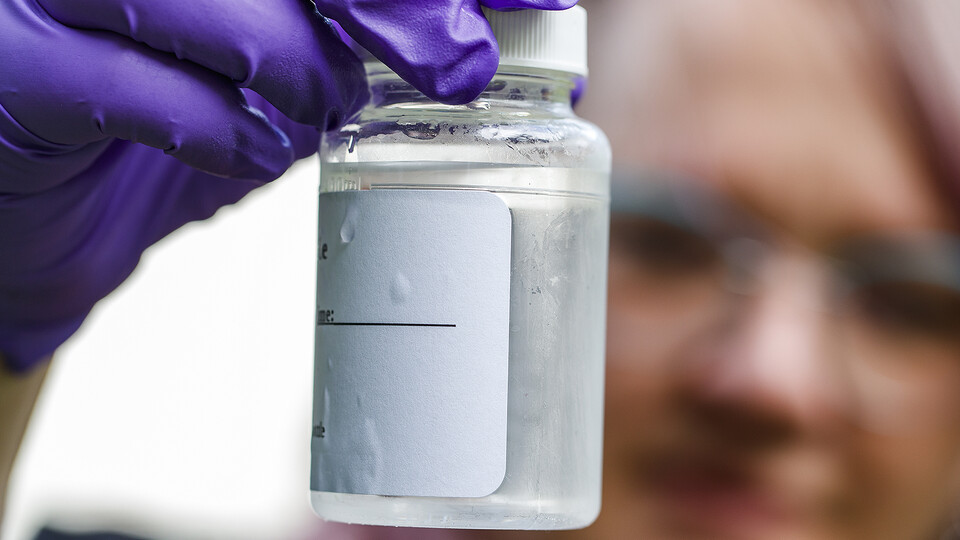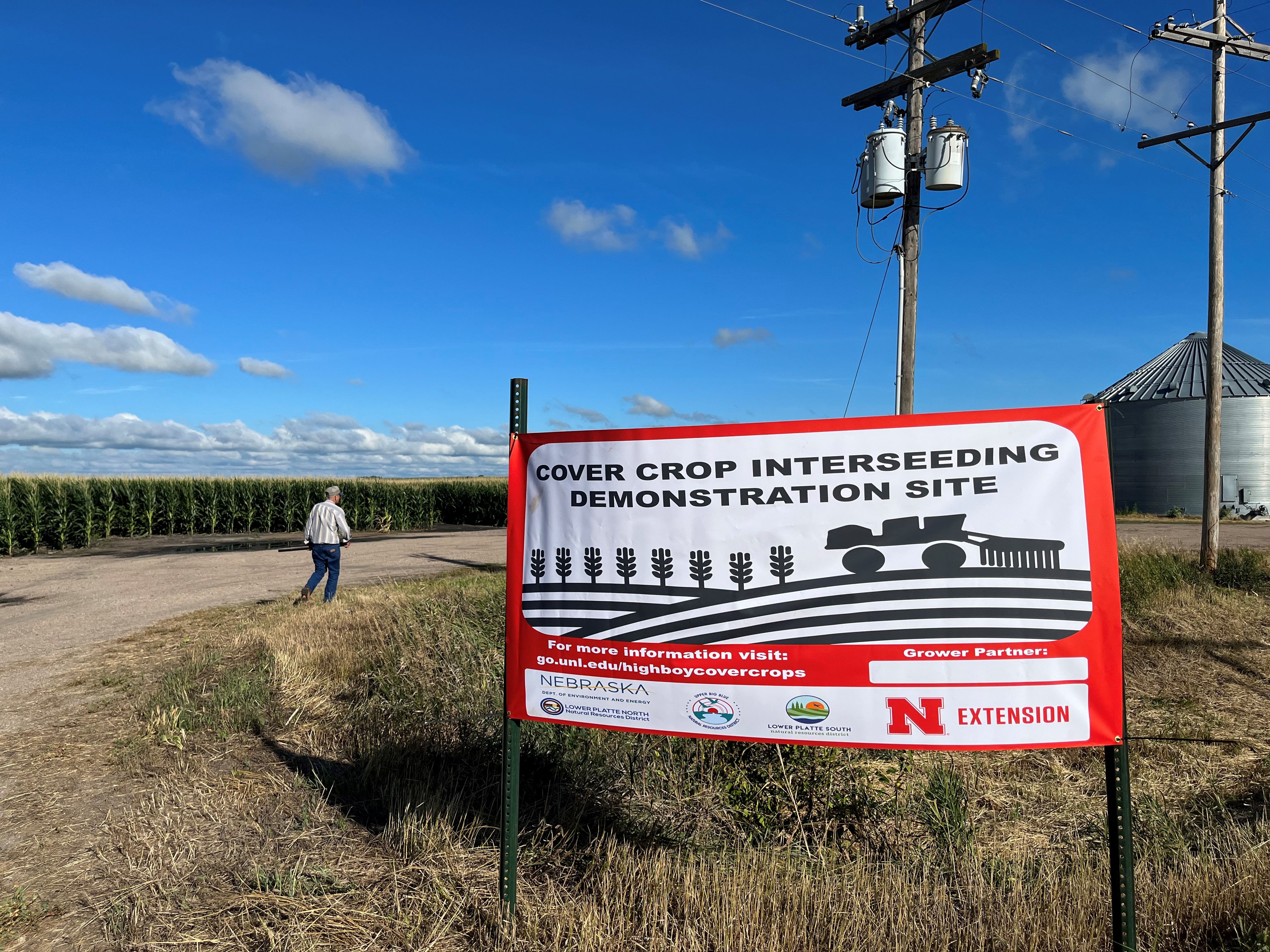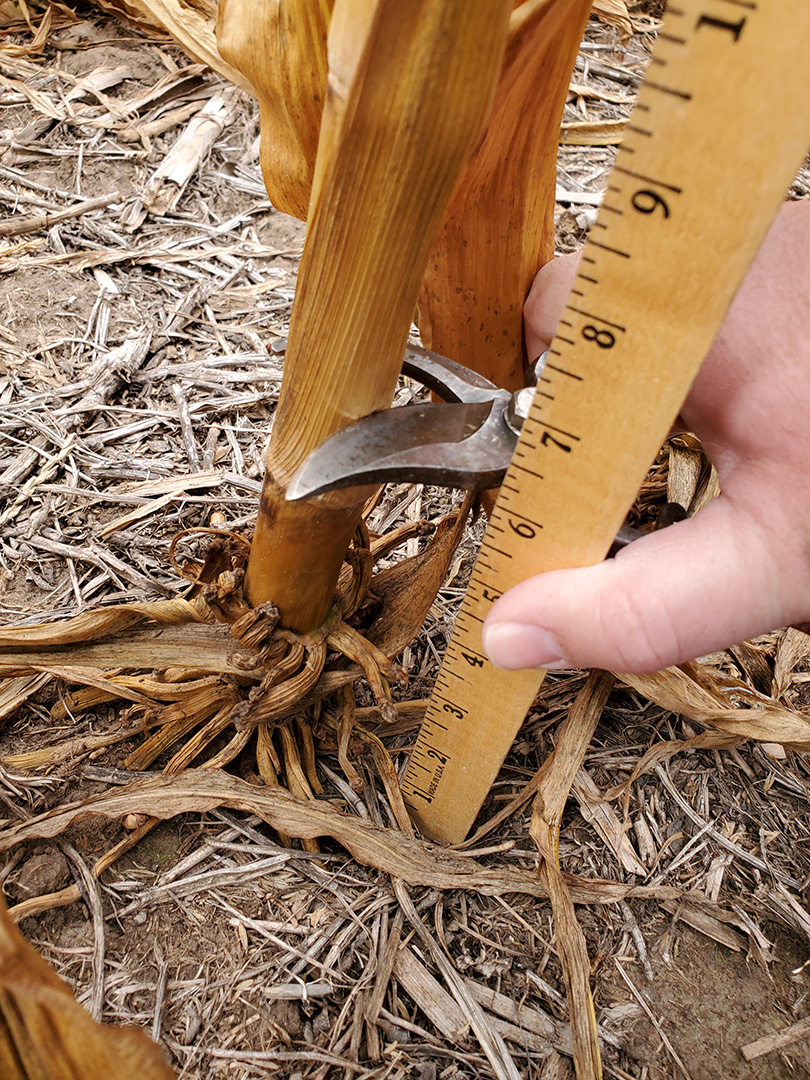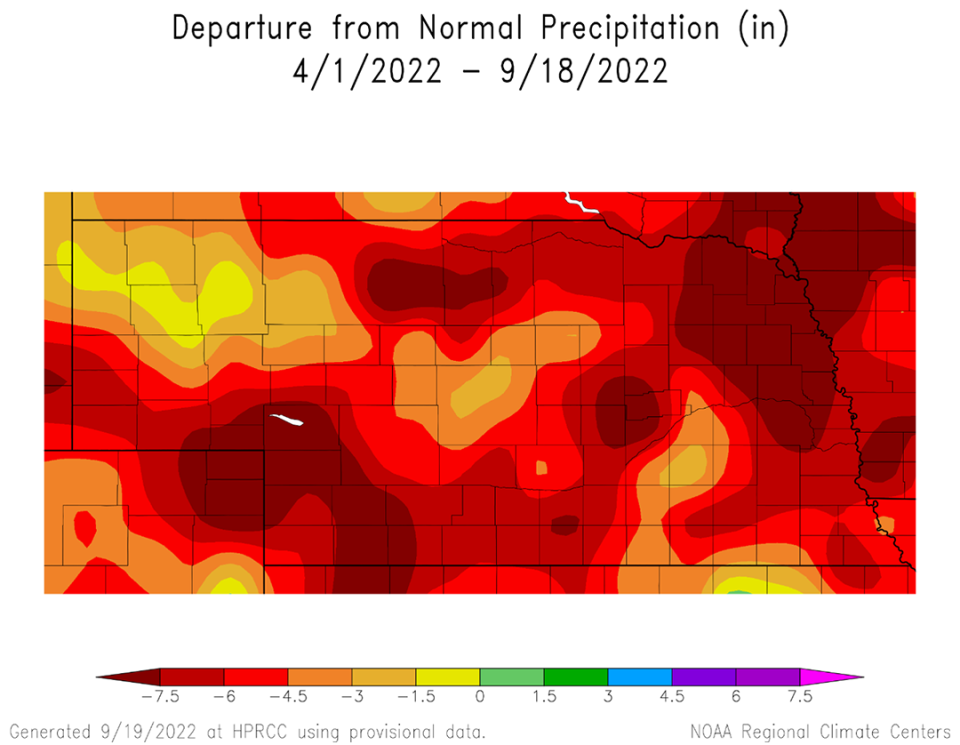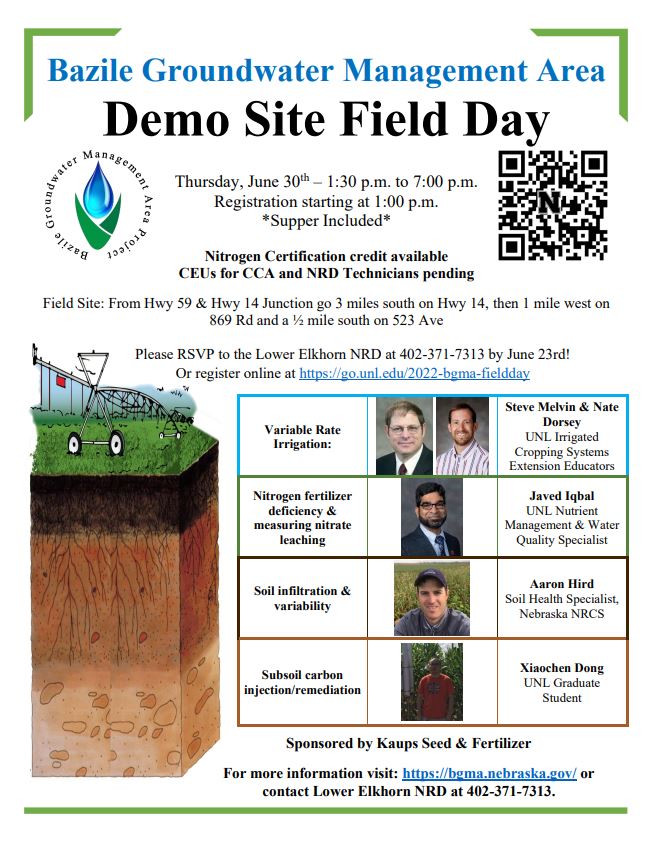Nitrate in Nebraska
Nitrate
What is Nitrate and where does it come from?
Katie Pekarek, Water Quality Extension Educator, University of Nebraska & Crystal Powers, Research and Extension Communications Specialist, Nebraska Water Center
Nitrogen is a valuable fertilizer source that keeps Nebraska growing abundant landscapes and crops. Nitrogen that does not get used by the crop ends up in our streams, lakes and groundwater. Nitrate is the most common form of nitrogen found in water.
Impacts (Health, Economic, and Recreation)
Nitrate in Nebraska waters has economic, recreation, and health impacts for all of our citizens.
- Farmers recognize the economic and opportunity loss of nitrogen that is not utilized for growing crops.
- Millions of tax dollars are managed by Natural Resources Districts, Cities, and conservation agencies to prevent and treat nitrate contamination of water annually.
- Nearly 1 in 5 Public Water Supplies and private wells in Nebraska consitantly tests high for nitrate-nitrogen. This number is growing. (NDEE Groundwater Report, Risk and Cost Assessment of Nitrate Contamination in domestic wells).
- Nitrate is a significant contributor to the presence of Harmful Algal Blooms (HABs). Public beaches in Nebraska are monitored for HABs and closed if the level gets to high.
- Long term exposure of high nitrate levels can harm fish and their habitats as the result of excessive aquatic plant growth, modified pH, and lowered dissolved oxygen levels.
- Research has long shown that nitrate exposure is a hazard for infants. Emerging research has demonstrated strong links with high nitrate concentrations in drinking water and lifetime risk of negative birth outcomes, thyroid disease, and certain cancers (Reference). The drinking water standard for nitrate in water is 10 mg/L.
Sign up for updates from UNL Water
